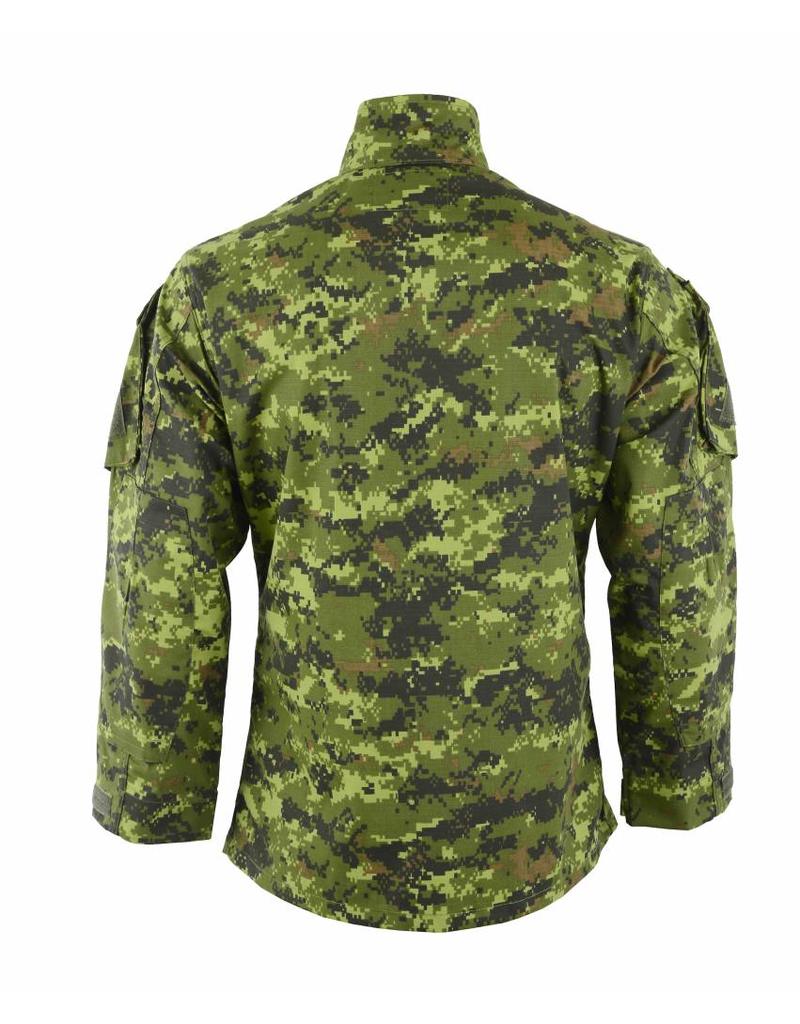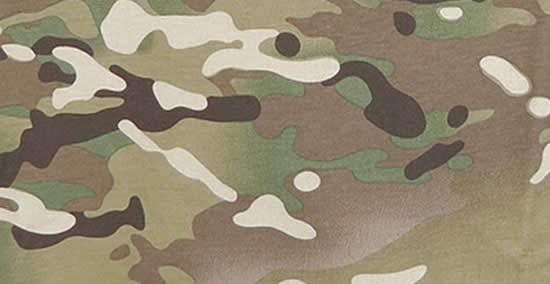The best military camos

Camouflage is used all over the world by man and beast, to hunt, to hide, without being seen. While many animals have specialized their camouflage in the environment in which they evolve, the military needs are more varied.
More often than not, the military must operate in multiple locations and under varying conditions.
Whether you are military, serving or retired, camouflage net enthusiast, paintball or airsoft enthusiast, or just want to give your opinion on the most cam, you can leave a comment at the bottom of this article .
MultiCam
MultiCam is a camouflage pattern used by the United States Special Operations Command since 2010, although its history goes back much further. MultiCam was originally developed by Crye Precision in 2002, as a joint project with the US Army's Solider System Center.
The intention was to replace the long-used 3-color desert and woodland camouflage patterns with a more versatile system that would work in a wide range of conditions.
This necessity became evident during the first Gulf War, when troops redeployed from Europe had to scramble to find camouflage equipment for the desert. Furthermore, the war on terrorism has required rapid deployments in a wide variety of climates.
Although MultiCam's Triplet Hex Pattern might look a bit unusual for people used to traditional camouflage patterns, it was a welcome change from the controversial Universal Camouflage Pattern (UCP).
marpat

MARPAT is the military camouflage pattern adopted by the United States Marine Corps as a replacement for the camouflage utility uniform (used since 1977). MARPAT has an interesting history. Developed by designer Tim O'Neill, MARPAT is a digitized pattern, in which smaller pixels take the place of the flecks and swirls found on conventional camouflage.
Based on the CADPAT pattern successfully developed for the Canadian Armed Forces, MARPAT was launched in 2001 with the Marine Corps Combat Utility Uniform. Patented by the United States Government, genuine MARPAT is exclusive to the USMC, so much so that the Corps' eagle, globe and anchor emblem are woven into the design.
M81 Woodlands

Adopted by the USMC in 1977 and the US Army in 1981, M81 Woodland is a classic camouflage pattern that remained in use until the mid-2000s. For those who grew up in military families, it is reminiscent of the Army life in the 1980s.
However, the M81 Woodland had its limitations. The heavy material was not suitable for hot and humid environments. In the 1980s, the American army was focused on Europe, which was not a problem. However, deployment to the Gulf in the early 1990s brought this limitation to light, as well as that of the military camouflage pattern itself. We started working on new models, which will be released almost a decade later.
CadPat

The inspiration for MARPAT, the Canadian Disruptive Pattern (CADPAT), was one of the first computer-generated military camouflage patterns to enter active service, following a bumpy development beginning in 1988.
Like many other NATO nations, Canada was looking for an updated camouflage pattern and uniform design that reflected the multipurpose needs of the modern warfighter. They found it in CADPAT.
Intended to operate in a wide variety of environments while providing some protection from night vision devices, the CADPAT's pixelated design was one of the first such designs to become widespread. First introduced in 1996, the design was quickly adopted and is now in place across all Canadian Armed Forces. Currently available in four colors, an urban version of the CADPAT is under research and development.
MTP - Multi Terrain Pattern

Since replacing the DPM in 2011, the Multi-Terrain Pattern (MTP) has been the basic camouflage pattern of the British Armed Forces. As with MARPAT, CADPAT and MultiCam, the MTP is designed to operate in a wide variety of settings and environments, giving British troops the versatility to respond to missions around the world.
However, it breaks with many modern military camouflage patterns in that the MTP is not a digitized pattern but rather a more traditional mix of colors and shapes. Inspired by the experiences of British troops in Afghanistan, the MTP has been extensively field tested in that country as well as in the UK, Cyprus and Kenya.
It is evident that the MTP was up to the challenge, as it succeeded in the very different environments found in these places. The MTP is also a success internationally, as it is currently used by the armies of Malta and Tonga.
Flecktarn

"Flecktarn" is the German abbreviation for "spotted camouflage". It is also known as Flecktarnmuster or Fleckentarn and is a catch-all term for a variety of camouflage patterns.
The most common is a five-color pattern consisting of dark green, light green, black, red-brown, and green-brown. Flecktarn was a huge advancement in camouflage techniques and technology, and some versions of this process have been used by German troops since the end of World War II.
The modern Flecktarn originated in the late 1970s, when West German troops recognized the need for a new pattern to replace the solid olive-colored uniforms then in use. The Flecktarn rose to prominence in 1991, when it became the model uniform of reunified Germany. It has also enjoyed international success, with nations as far afield as India using versions of Flecktarn in their uniforms.
tigerstripe

Tigerstripe is a catch-all technical term for a family of military camouflage patterns used by the United States in the 1960s and 1970s. This distinctively aggressive pattern was developed to meet the specific needs of American troops in Vietnam.
Dense jungle fighting changed the way camouflage and drab-colored uniforms worked, and American soldiers and marines needed a new pattern to keep them hidden.
Perhaps most interesting about Tigerstripe is that it was never officially adopted by the United States.
Military personnel, began to like the unique look and effectiveness of the pattern, and commissioned local tailors to make uniforms using this pattern. It remains popular around the world, with the armed forces of the Philippines and Thailand still using it.
DBDU
The Persian Gulf War was a major turning point for the US military. The Cold War had ended, and major operations were moving from Europe to the Middle East and beyond. The M81 Woodland BDUs were less than optimal in these new environments, and American troops needed new uniforms and a new military camouflage pattern to better approach the current mission.
The desert combat uniform was originally developed in 1962, but went unchallenged until full-scale deployment in the Middle East during Operations Desert Shield and Desert Storm.
The unique "chocolate chip" pattern utilized the special nature of desert light and shadow on the uneven sand and rock surfaces found in the region. Although it has since been abandoned, this pattern provided the impetus for later research into digital camouflage.
Pencott Green Zone

The British company Hyde Definition has developed camouflage patterns for militaries around the world. So it's a bit of a surprise that their most popular model has yet to see service in the military.
PenCott Multi-Environment Camouflage takes pixel camouflage to the next level. Using only four colors with smaller pixels and better shading and blending, PenCott GreenZone delivers true omnidirectional coverage, pattern disruption and low light performance while remaining affordable to manufacture.
In addition to the Forested GreenZone, other patterns are available: Badlands (semi-arid); Sandstorm (arid), and Snowdrift (arctic). Although none of them have been battle tested by a military force, their performance in civilian hands speaks volumes.
Desert Night
Perhaps the first digital camouflage pattern that saw large-scale combat was Desert Adaptive Night Camouflage (DNC). It is a pixelated pattern in two colors, one of the first military camouflage patterns intended to thwart the night vision devices of enemy vehicles.
Did it work? It depends on who you ask. Informal testing by United States Navy snipers in Kuwait during the Gulf War showed that the DNC pattern was no harder to see at night than any other pattern.
In fact, they found that with some night vision equipment, the DNC was actually more visible against a desert background. The pattern was therefore not retained, and no specific night camouflage pattern has been adopted since then. Much has been said in military circles about the money wasted on this failed model.
However, the DNC played an essential role within the American and British special forces during the greatest war of the 1990s and will forever remain an important military model in history.
0 comments